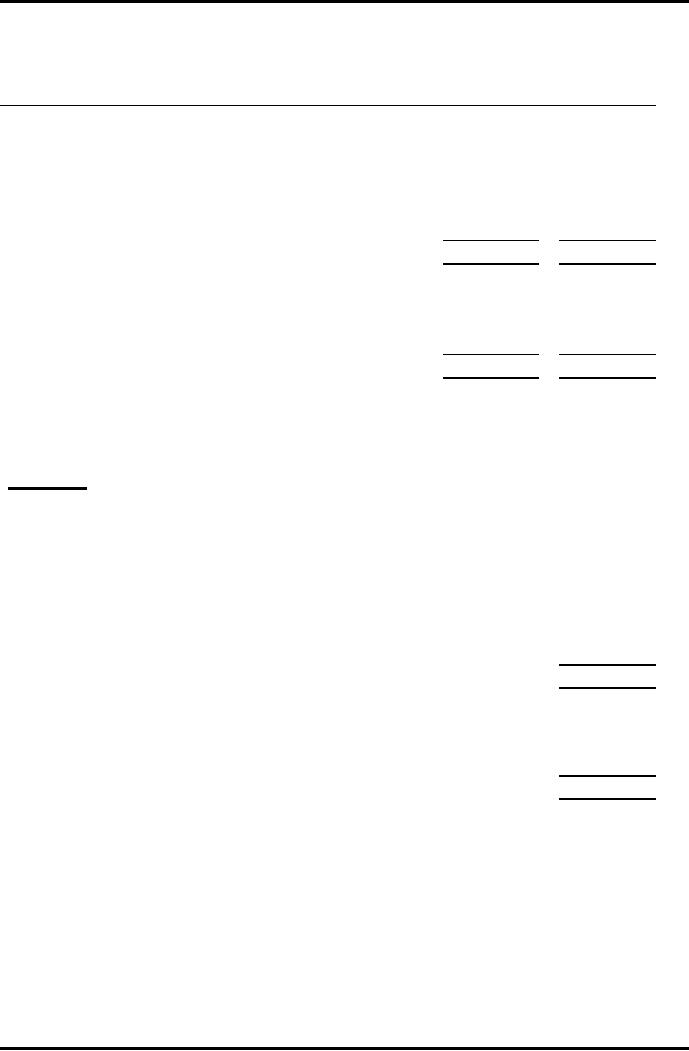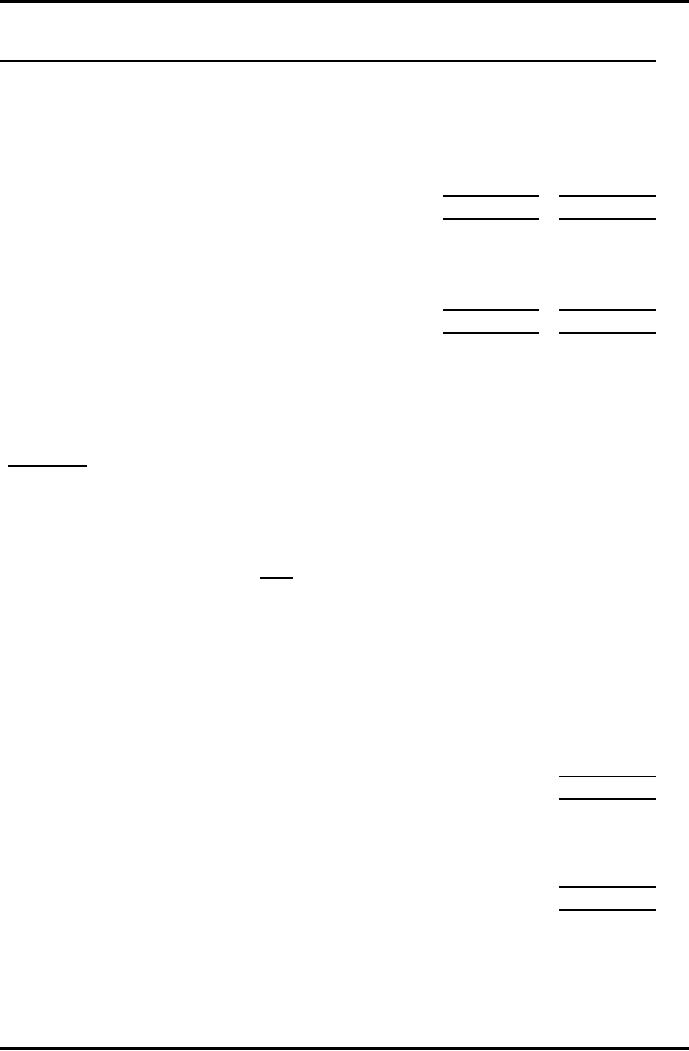 |
GROUP ACCOUNTS |
| << DILUTED EARNINGS PER SHARE |
| Pre-acquisition Reserves >> |

Advance
Financial Accounting
(FIN-611)
VU
LESSON
# 36
GROUP
ACCOUNTS
It is
obvious from the name that
group accounts will be demonstrating
financial status
of
more than one entity. Group
accounts are the financial
statements of different
entities
operating in a group. Group of companies
is established in order to
obtain
benefits
of synergy, better management of
resources, and to avoid
competitive
business
environment.
Formation
of a group of companies takes place when
one company establishes
its
control
over another company. This
creates a relationship of parent and
subsidiary.
The
company that enjoys control
is named as parent company and
the company that is
controlled
is known as subsidiary company. In a group
there will be one
parent
company
with its one ore more than
one subsidiary companies.
Therefore, Group
means
a parent and all its
subsidiaries.
Control:
According
to IFRS 3 and IAS 27, Control
is the power to govern the financial and
operating
policies
of an entity so as to obtain benefits
from its activities.
Normally
control is assumed to exist when
the parent company acquires
majority
number of
ordinary share capital. But
according to the above
referred accounting
standards
control exists when any of the following
situation crops up.
When
the parent company:
1.
Has owned more than 50% of
the voting rights of subsidiary
company (Each
ordinary
share capital has one voting
right)
2.
Has power over more than
50% of the voting rights of
subsidiary company by
virtue of
agreement with other share-holders of
it.
3.
Has power to govern the
financial and operating policies of
subsidiary
company
by statute or under an agreement.
4.
Has power to appoint or remove a
majority of the directors of
subsidiary
company.
5.
Has power to cast the
majority of votes at meetings of
the board of directors
of
subsidiary
company.
Consolidated
Financial Statements:
A
single set of financial
statements that combine the
assets, liabilities, incomes
and
expenses
of a parent company and its
subsidiaries. In our syllabus we shall
learn how
to
prepare:
1.
Consolidated Balance
Sheet
2.
Consolidated Income
Statement
193

Advance
Financial Accounting
(FIN-611)
VU
Group
Accounts
Example
- [ Case i ] Simple
Consolidation
Balance
Sheet as on 31st December
2008
S
P
Rs
Rs
400
Fixed
Assets
1,000
Investment
in S.
500
Current
Assets
400
200
1,900
600
Share
Capital
1,200
300
Reserves
500
200
Current
Liabilities
200
100
1,900
600
The
Parent Co. (P) acquired
100% shares of the
Subsidiary Co. (S) on
31st
December
2008.
Required:
Prepare
the Consolidated Balance
Sheet as on the same
date.
Solution
- [ Case i ]
Consolidated
Balance Sheet
As at 31
December 2008
Rs
Fixed
Assets
1,400
Current
Assets
600
2,000
Share
Capital
1,200
Reserves
500
Current
Liabilities
300
2,000
The
above example covers simple
consolidation of balance sheet
that explains
how
the assets and liabilities of subsidiary
company are consolidated with
the
assets and
liabilities of the parent
company. This also explains
that the cost of
investment
appearing in the parent
company gets cancelled with
the amount of
the
owner equity of the subsidiary
company. This cost of
investments is asset of
the
parent company made up from
its own sources therefore in
the consolidated
balance
sheet we have to replace the
cost of investment in subsidiary
company
with
net assets of it. The only
care is to be taken is to consolidate all
assets and
liabilities
individually and remember do not confuse why we
are not
consolidating
the owner equity of the
subsidiary company in the
parent
company's
owners' equity.
194

Advance
Financial Accounting
(FIN-611)
VU
Example
- [ Case ii ] Goodwill
Balance
Sheet as on 31st December
2008
P
S
Rs
Rs
Fixed
Assets
1,000
400
Investment
in S.
500
Current
Assets
400
200
1,900
600
Share
Capital
1,200
300
Reserves
500
150
Current
Liabilities
200
150
1,900
600
The
Parent Co. (P) acquired
100% shares of the
Subsidiary Co. (S) on
31st
December
2008.
Prepare
the Consolidated Balance
Sheet as on the
same
date.
Required:
Solution
- [ Case ii ]
Working for
Calculation of Good will:
Cost
of investment
500
Net assets of S
Co acquired
450
Good
will
50
Consolidated
Balance Sheet
As at 31
December 2008
Rs
Fixed
Assets
1,400
Goodwill
50
Current
Assets
600
2,050
Share
Capital
1,200
Reserves
500
Current
Liabilities
350
2,050
Good
Will:
Good
will is the excess of the
cost of investment made in
the subsidiary
company
over the fair value of
the net assets of the
subsidiary company
acquired.
195
Table of Contents:
- ACCOUNTING FOR INCOMPLETE RECORDS
- PRACTICING ACCOUNTING FOR INCOMPLETE RECORDS
- CONVERSION OF SINGLE ENTRY IN DOUBLE ENTRY ACCOUNTING SYSTEM
- SINGLE ENTRY CALCULATION OF MISSING INFORMATION
- SINGLE ENTRY CALCULATION OF MARKUP AND MARGIN
- ACCOUNTING SYSTEM IN NON-PROFIT ORGANIZATIONS
- NON-PROFIT ORGANIZATIONS
- PREPARATION OF FINANCIAL STATEMENTS OF NON-PROFIT ORGANIZATIONS FROM INCOMPLETE RECORDS
- DEPARTMENTAL ACCOUNTS 1
- DEPARTMENTAL ACCOUNTS 2
- BRANCH ACCOUNTING SYSTEMS
- BRANCH ACCOUNTING
- BRANCH ACCOUNTING - STOCK AND DEBTOR SYSTEM
- STOCK AND DEBTORS SYSTEM
- INDEPENDENT BRANCH
- BRANCH ACCOUNTING 1
- BRANCH ACCOUNTING 2
- ESSENTIALS OF PARTNERSHIP
- Partnership Accounts Changes in partnership firm
- COMPANY ACCOUNTS 1
- COMPANY ACCOUNTS 2
- Problems Solving
- COMPANY ACCOUNTS
- RETURNS ON FINANCIAL SOURCES
- IASB’S FRAMEWORK
- ELEMENTS OF FINANCIAL STATEMENTS
- EVENTS AFTER THE BALANCE SHEET DATE
- PROVISIONS, CONTINGENT LIABILITIES AND CONTINGENT ASSETS
- ACCOUNTING POLICIES, CHANGES IN ACCOUNTING ESTIMATES AND ERRORS 1
- ACCOUNTING POLICIES, CHANGES IN ACCOUNTING ESTIMATES AND ERRORS 2
- BORROWING COST
- EXCESS OF THE CARRYING AMOUNT OF THE QUALIFYING ASSET OVER RECOVERABLE AMOUNT
- EARNINGS PER SHARE
- Earnings per Share
- DILUTED EARNINGS PER SHARE
- GROUP ACCOUNTS
- Pre-acquisition Reserves
- GROUP ACCOUNTS: Minority Interest
- GROUP ACCOUNTS: Inter Company Trading (P to S)
- GROUP ACCOUNTS: Fair Value Adjustments
- GROUP ACCOUNTS: Pre-acquistion Profits, Dividends
- GROUP ACCOUNTS: Profit & Loss
- GROUP ACCOUNTS: Minority Interest, Inter Co.
- GROUP ACCOUNTS: Inter Co. Trading (when there is unrealized profit)
- Comprehensive Workings in Group Accounts Consolidated Balance Sheet